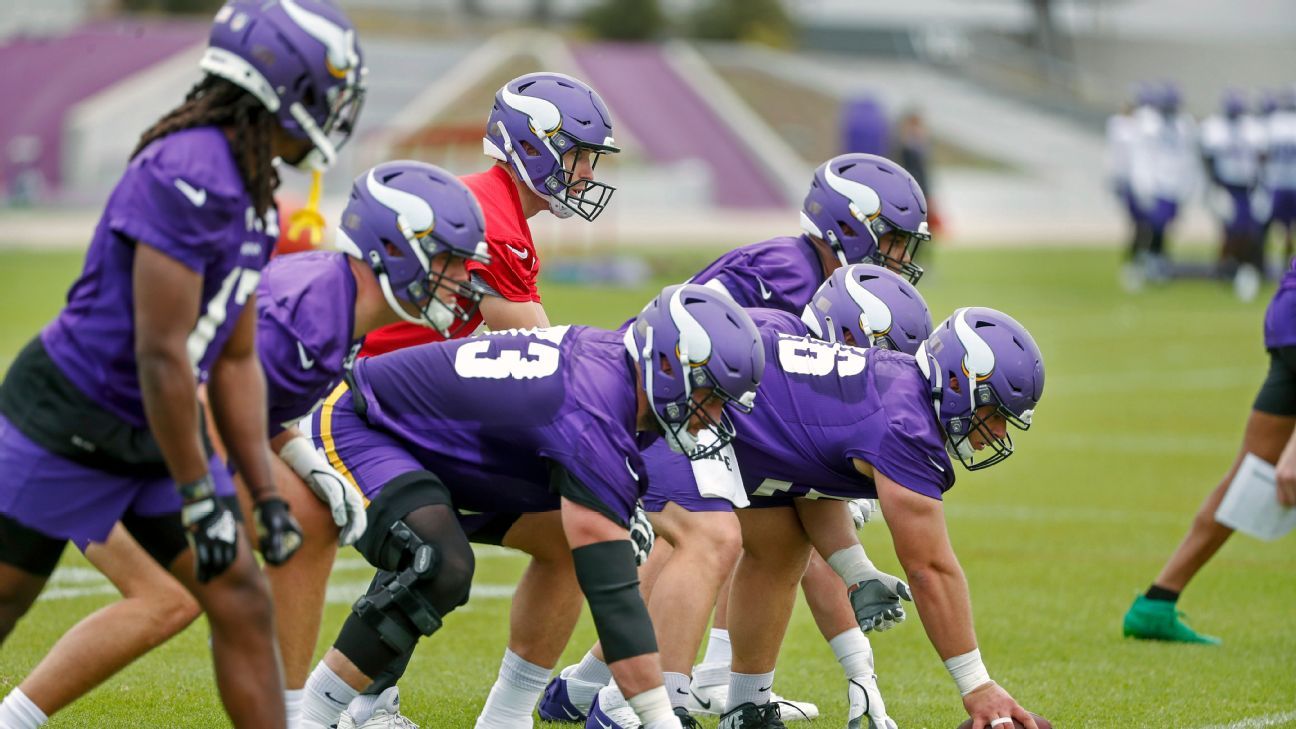Kirk Cousins flashcards and why Adam Thielen is “swimming” in new Vikings terminology – Minnesota Vikings Blog
EAGAN, Minn. — The Minnesota Vikings’ new coaching staff ran into a problem early in their tenure. While building his offensive plan, coach Kevin O’Connell wanted to incorporate a menu of plays he used in his previous role as offensive coordinator for the Los Angeles Rams. Unfortunately, those games were lumped together in what the Rams called their “Rampage” menu, after the team’s mascot.
“We didn’t want to use that word,” said Vikings offensive coordinator Wes Phillips, a former Rams assistant at O’Connell.
They circled the room, using what O’Connell called the coaches’ “word bank.”
“Viktor”, the Vikings mascot, did not sound good. “Ragnar”, nickname of a former mascot either. Eventually, they settled on “Rage”, a word that occasionally appears in Viking and Norse mythology.
NFL teams spend millions of dollars on their coaching staffs, who then spend countless hours creating innovative strategies and new-age techniques for player development. Before any of that happens, however, coaches go through the NFL’s age-old tradition of devising unique and exclusive terminology for their plays, pacing and controls at the line of scrimmage. In Minnesota, it meant the team’s first overhaul of verbiage in nearly a decade, following coach Mike Zimmer’s eight-season run, and it sent some of the team’s most established veterans into extreme school fashion.
“It’s crazy,” catcher Adam Thielen recently told The Pat McAfee Show. “It’s the greatest learning I’ve ever had to do. … I try to find ways as an old man to learn quickly and try to understand the little details.”
Quarterback Kirk Cousins resorted to flash cards, using them every night during OTAs to memorize words and match them to plays he calls.
“It’s an effective method and it’s been effective for me,” Cousins said, “but not one I’ve used a lot in the past. I laughed a little, just the fact that that’s how I I was studying. You gotta learn it somehow, and if it works out, great.”
NFL playbooks are among the most closely watched documents in sports, but the irony of it all is that most teams are running some version of the same plays — as indicated by the Vikings’ transition from “Rampage” to “Rage”. It is rare that a truly original concept emerges. But the words used to call these pieces change regularly, for at least two reasons. First, O’Connell said, enhanced audio coverage during game broadcasts can reveal key clues to opponents and require regular updating.
“TV prints have become a valuable thing in the league,” O’Connell said, “and not just to hear analysts predict games and things like that, but to actually hear what you put on tape, [such as] cadences and different things we do on the line of scrimmage.”
More importantly, however, O’Connell and many other coaches try to use words that have a tangible connection to the team and its players. “Explaining the why,” O’Connell said, can make verbiage easier to learn.
Cousins recalled a moment shortly after Washington’s COs drafted him in 2012. His offensive coordinator at the time, Kyle Shanahan, taught a play called “Arches.” The cousins struggled to absorb it and asked Shanahan why he called it “Arches”. It turns out the play was popularized by the Rams’ “Greatest Show on Turf” offense in the late 1990s and early 2000s. At the time, the Rams were playing in St. Louis, home from the iconic Gateway Arch.
Once Shanahan made that connection, with a video of the Rams performing the play with Hall of Fame running back Marshall Faulk, Cousins never forgot him.
Many of today’s NFL players wore diapers when the Rams played in St. Louis, of course, and might not get the reference. “Arches” has been modernized several times since then.
Defensive terminology is generally simpler and shorter, but for this reason must change frequently. As they learn of the plan and the calls of new defensive coordinator Ed Donatell, the Vikings defensive players prepare for a different challenge.
“You have to know the details of the game,” inside linebacker Jordan Hicks said. “Then the internal adjustments in the game. So it’s just as difficult as on the offensive side. I know for us our calls are probably a bit easier than theirs – two-word calls versus 15-word calls on offense like those guys. But still, to understand the meaning and what’s behind it, that’s what we have to do, and with all the changes coming.
It was therefore not surprising to see and hear of a high level of confusion and questions during Viking spring practices. Thielen noted that while “everything makes sense”, he is currently “swimming” through a huge amount of material to memorize in a relatively short period of time.
Partly because of that learning curve, O’Connell conducted most 11-on-11 drills at “jogging” speed this spring to focus on mental processing rather than physical perfection. It helps, of course, to have playcalls that are easier to remember.
“The ‘why’ helps me learn it,” Cousins said. “I don’t ask, ‘Why?’ be difficult. I said, “If you give me the why, it will help me remember it.” To their credit was the intentionality [and] there was a thought behind why the word is called this and why the word is called that, sometimes more than I even thought when I asked the question.”


Comments are closed.